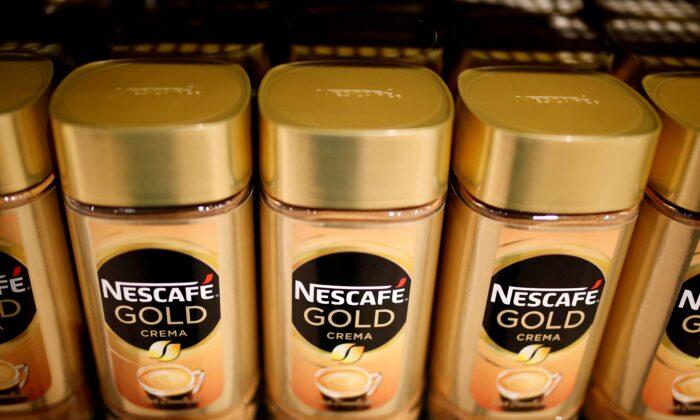ZURICH/LONDON—The world’s biggest food group Nestle will lift prices again this year, Chief Executive Mark Schneider said on Thursday, after more costly ingredients contributed to making its 2022 profit miss market forecasts.
Rivals have said they anticipate a more positive pricing outlook for shoppers in 2023. But Schneider said further rises were necessary to offset the impact of increased commodity prices. That is bad news for consumers, whose spending power has already been hit by inflation at multi-decade highs.
The maker of Nescafe instant coffee and KitKat chocolate bars raised prices by 8.2 percent last year, but that did not fully offset the impact of increased costs for ingredients on margins.
“Our gross margin is down about 260 basis points—that is massive. That is after all the pricing we have done in 2022,” Schneider told reporters.
Consumer goods producers increased prices to cope with surging costs for almost all raw materials after Ukraine’s conflict compounded pandemic-related supply chain logjams.
But they face a challenge in how much they can increase prices before even affluent shoppers decide enough is enough.
Unilever said last week it would continue to raise prices for its detergents, soaps, and packaged food to offset rising input costs, but would ease those hikes in the second half of 2023.
Snack and soda maker Pepsico said last week it would stop raising prices after multiple hikes last year helped it beat analyst estimates for profit and sales.

‘Mixed Emotions’ After Rare Miss
Barclays analyst Warren Ackerman expects “almost all” of the lower-than-estimated volumes would be the result of Nestle rethinking the variety of products it makes and supply chain constraints, he said on Thursday.The question will be how much of the volume weakness persists from these factors into the first half of the year, he added.
Schneider said that, in most cases, the impact to volumes did not signal consumers trading down to cheaper private label products.
Net profit fell to 9.3 billion Swiss francs, missing expectations for 11.6 billion francs, although the consensus forecast did not account for the impairment at Nestle’s Aimmune subsidiary last year, analysts said.
“Nestle rarely misses and that was a miss,” said Bernstein analyst Bruno Monteyne.
Shares in Nestle were down 2.8 percent in mid-afternoon trading.
Nestle said it targeted organic sales growth—which cuts out the impact of currency moves and acquisitions—in a range of 6–8 percent in 2023.
During 2022 the company’s reported sales increased 8.4 percent to 94.4 billion Swiss francs ($102.31 billion).
($1 = 0.9227 Swiss francs)





